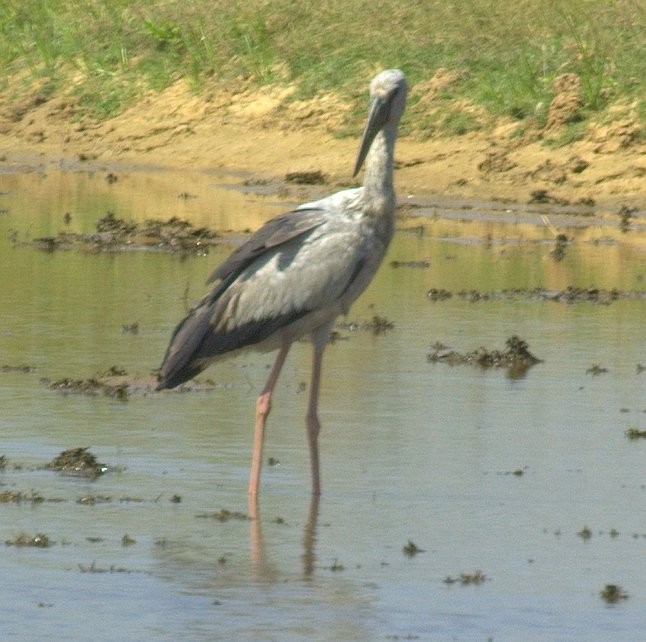Asian Openbill
A species of Openbills Scientific name : Anastomus oscitans Genus : Openbills
Asian Openbill, A species of Openbills
Botanical name: Anastomus oscitans
Genus: Openbills
Content
Description People often ask General Info
 Photo By Manvendra Bhangui from Chennai, India , used under CC-BY-SA-2.0 /Cropped and compressed from original
Photo By Manvendra Bhangui from Chennai, India , used under CC-BY-SA-2.0 /Cropped and compressed from original Description
The Asian openbill stork is predominantly greyish (non-breeding season) or white (breeding season) with glossy black wings and tail that have a green or purple sheen. The name is derived from the distinctive gap formed between the recurved lower and arched upper mandible of the beak in adult birds. Young birds do not have this gap. The cutting edges of the mandible have a fine brush like structure that is thought to give them better grip on the shells of snails. The tail consists of twelve feathers and the preen gland has a tuft. The mantle is black and the bill is horn-grey. At a distance, they can appear somewhat like a white stork or Oriental stork. The short legs are pinkish to grey, reddish prior to breeding. Non-breeding birds have a smoky grey wings and back instead of white. Young birds are brownish-grey and have a brownish mantle. Like other storks, the Asian openbill is a broad-winged soaring bird, which relies on moving between thermals of hot air for sustained flight. They are usually found in flocks but single birds are not uncommon. Like all storks, it flies with its neck outstretched. It is relatively small for a stork and stands at 68 cm height (81 cm long). 
Size
81 cm
Colors
Black
Gray
White
Life Expectancy
18 years
Nest Placement
Tree
Feeding Habits
Asian Openbill primarily feed on large molluscs like Pila snails. Utilizing their specialized bills, they extract snail bodies underwater, occasionally consuming frogs, insects, and water snakes. These birds forage in shallow waters, favoring natural marshes and agricultural landscapes, displaying a unique bill-tip technique to handle hard shells even without visual aid.
Habitat
Asian Openbill predominantly inhabits diverse inland wetlands across South and Southeast Asia. Their preferred environments are lakes, marshes, and agricultural areas like paddy fields and irrigation landscapes. Acclimated to human presence, asian Openbill also forages in cultivated regions. Although capable of living at elevations up to 3840 m, they mainly thrive in lowland wet habitats.
Dite type
Aquatic invertebrate eater
People often ask
General Info
Feeding Habits
Bird food type
Distribution Area
The usual foraging habitats are inland wetlands and are only rarely seen along river banks and tidal flats. On agricultural landscapes, birds forage in crop fields, irrigation canals, and in seasonal marshes. Birds may move widely in response to habitat conditions. Young birds also disperse widely after fledging. Individuals ringed at Bharatpur in India have been recovered 800 km east and a bird ringed in Thailand has been recovered 1500 km west in Bangladesh. Storks are regularly disoriented by lighthouses along the southeast coast of India on overcast nights between August and September. The species is very rare in the Sind and Punjab regions of Pakistan, but widespread and common in India, Sri Lanka, Nepal, Bangladesh, Myanmar, Thailand and Cambodia. 
Species Status
Not globally threatened.

 Photo By Manvendra Bhangui from Chennai, India , used under CC-BY-SA-2.0 /Cropped and compressed from original
Photo By Manvendra Bhangui from Chennai, India , used under CC-BY-SA-2.0 /Cropped and compressed from original